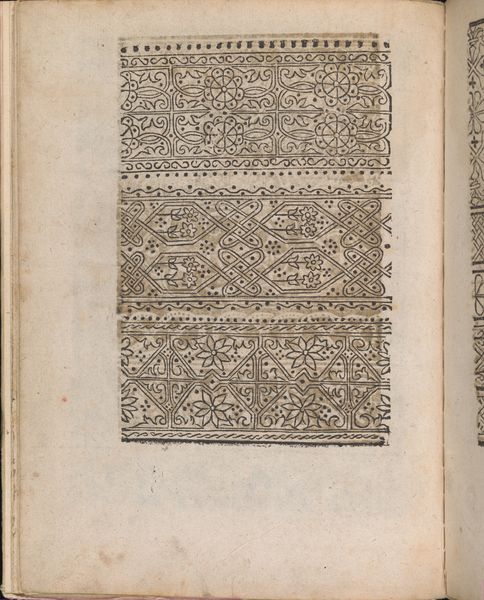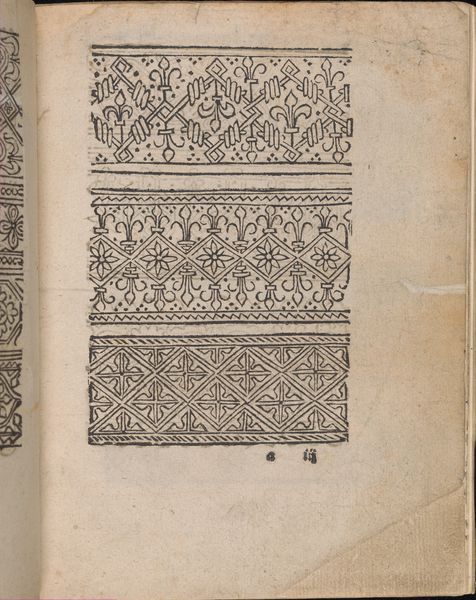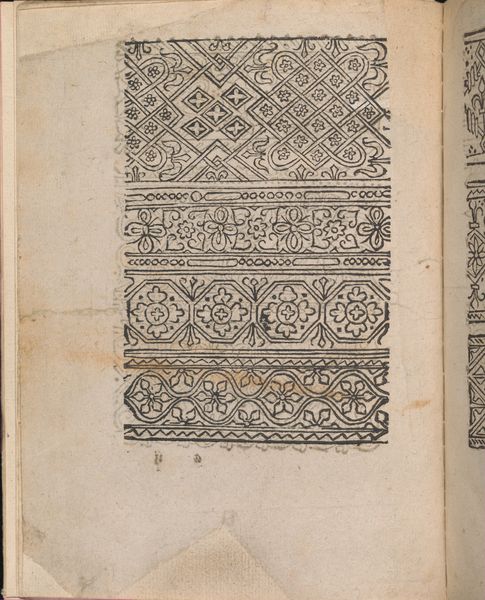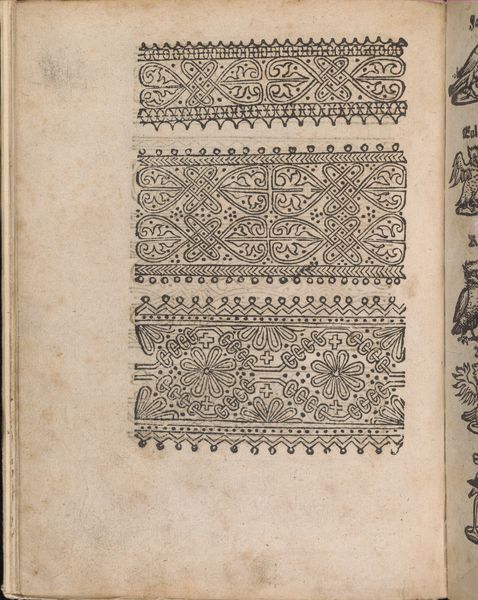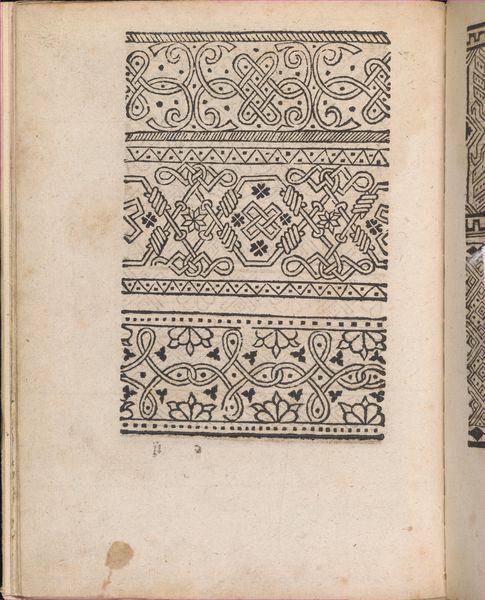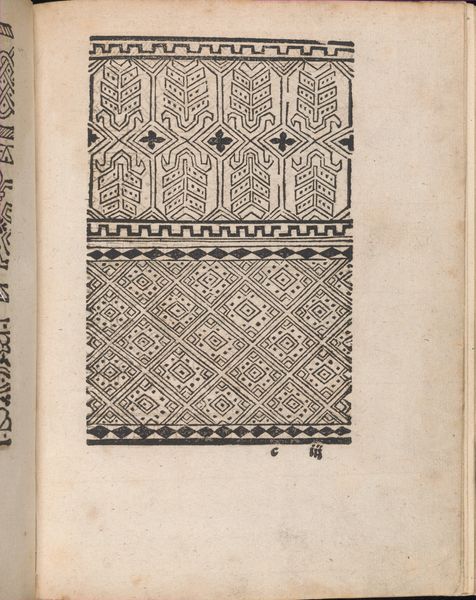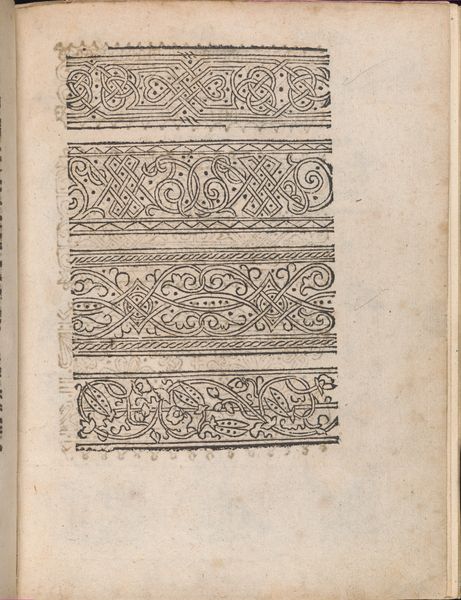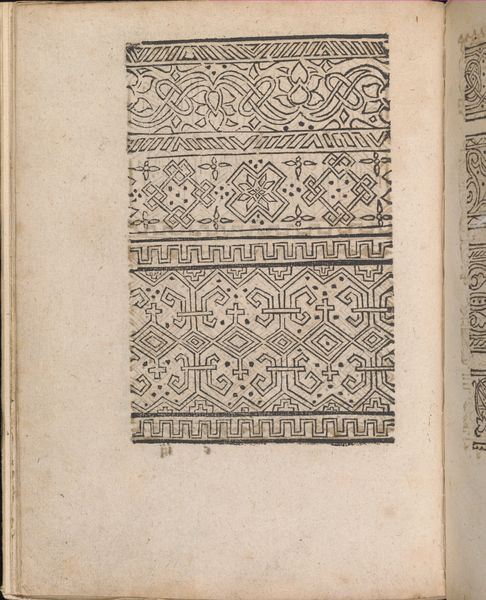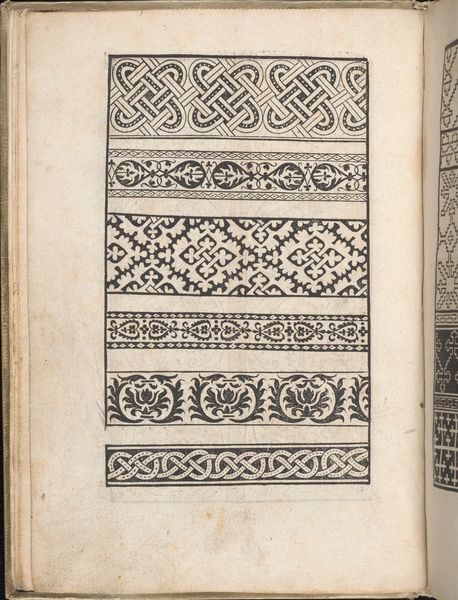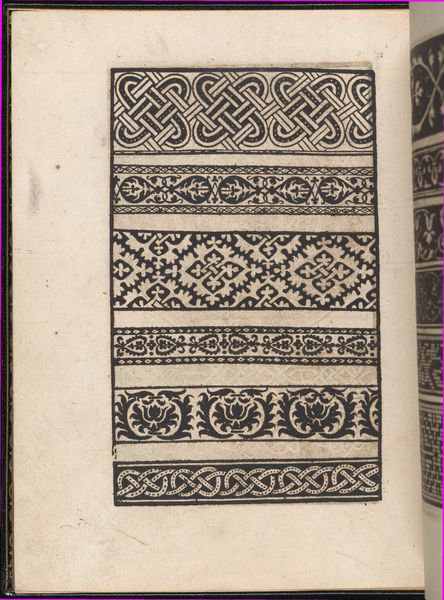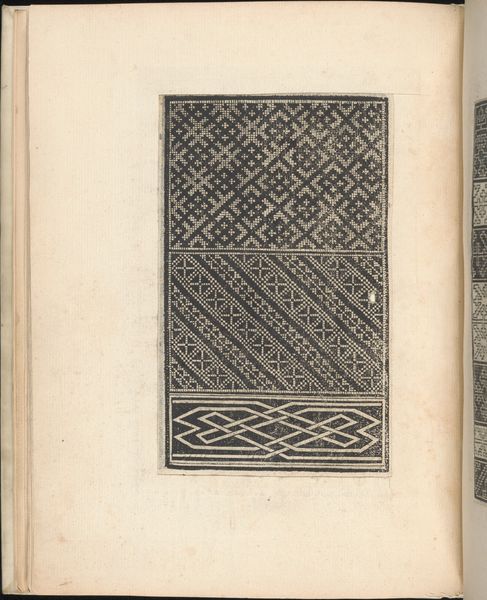
Modelbuch aller Art Nehens vn Stickens (Page 3v) 1535
0:00
0:00
drawing, print, woodcut
#
drawing
#
medieval
# print
#
woodcut
#
line
#
decorative-art
Dimensions: Overall: 7 5/16 x 5 5/16 in. (18.5 x 13.5 cm)
Copyright: Public Domain
Curator: Looking at this, I immediately think: control, order, maybe even a subtle sense of confinement. The rigid borders seem to want to restrain the free-flowing patterns inside. Editor: I find that an interesting response. The piece we are looking at, "Modelbuch aller Art Nehens vn Stickens (Page 3v)," dates back to 1535. It’s attributed to Christian Egenolff and is currently housed at the Metropolitan Museum of Art. As a woodcut print and drawing, it reflects the socio-cultural emphasis of the period when pattern books held immense value. Curator: That’s the backdrop then; how pattern books served this specific, quite limited societal function? Do we know what they represented beyond simply "patterns" in the cultural psyche? Editor: They were incredibly important for artisans. Before widespread literacy and the internet of course, these books democratized design. They disseminated styles and techniques, fostering a shared visual language. This particular page illustrates bands intended for sewing and embroidery. It demonstrates the transmission of designs and skills within craft guilds, particularly affecting women's work, as textiles were essential in displaying status and wealth. Curator: So they functioned as these quiet revolutionary tools, and within gendered roles—and those roles certainly contained social power dynamics. When I view them that way, suddenly my initial response feels superficial. Seeing these now as almost subversive templates makes the piece much more interesting and far from conformist. Editor: The choice of a woodcut too is pertinent, the material dictates certain stylistic choices that speak to the practicality and affordability of the prints. These aren't luxurious designs; they were workaday tools that played a part in the socio-economic fabric. These were functional objects mediating larger dialogues between skill, status, and artistic dissemination. Curator: Absolutely, it reframes our reading. These patterns acted as silent participants in dialogues around access, gendered labor, and economic mobility of these artisans. It definitely brings new context and life to this old page. Editor: Indeed. Studying this allows one to think about how we archive collective expression within crafts, beyond individual attribution. Curator: That is precisely the role and challenge facing us when curating materials today. It has been eye opening!
Comments
No comments
Be the first to comment and join the conversation on the ultimate creative platform.

